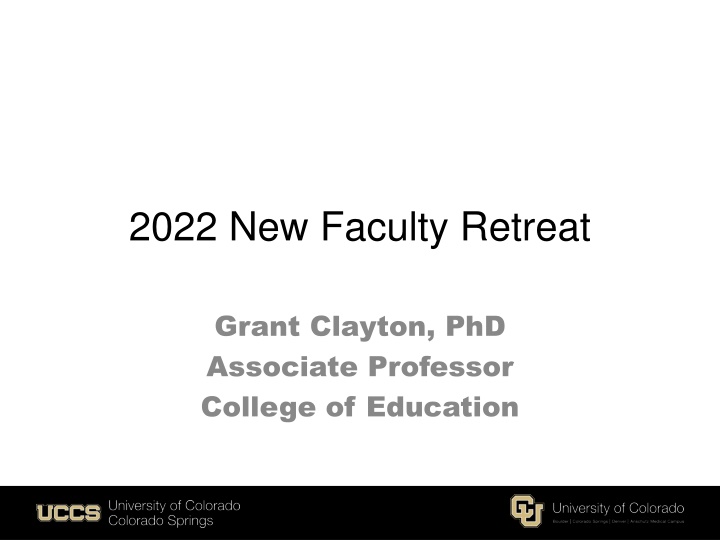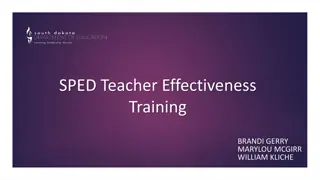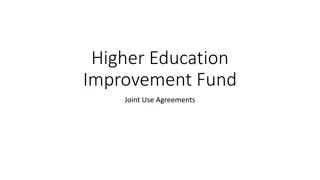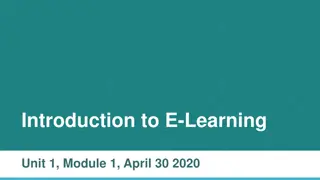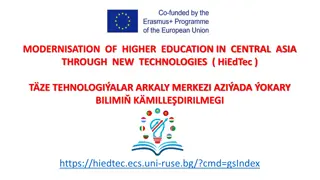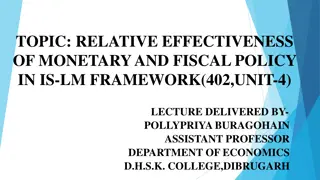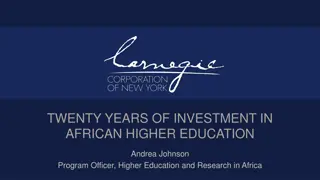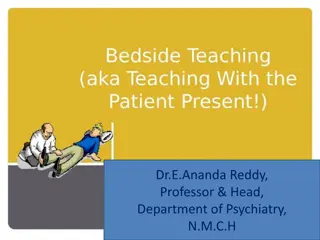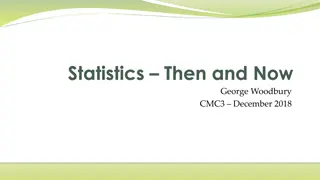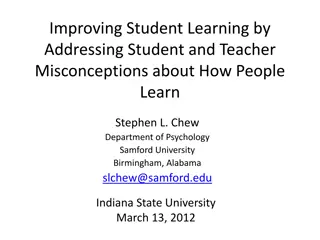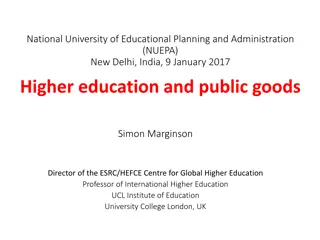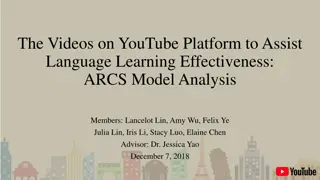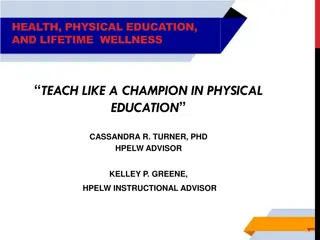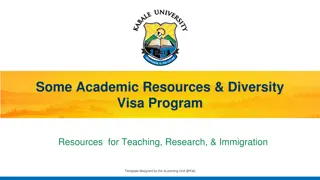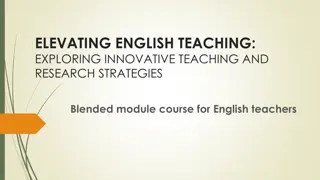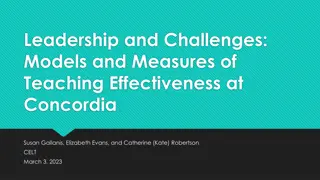Enhancing Teaching Effectiveness in Higher Education: Strategies and Considerations
Explore the essential aspects of curriculum, assessment, and instruction in higher education, uncovering the nuances between poor and effective practices. Discover the importance of aligning curriculum objectives with engaging instructional methods and meaningful assessment strategies to foster student learning and success.
Download Presentation

Please find below an Image/Link to download the presentation.
The content on the website is provided AS IS for your information and personal use only. It may not be sold, licensed, or shared on other websites without obtaining consent from the author.If you encounter any issues during the download, it is possible that the publisher has removed the file from their server.
You are allowed to download the files provided on this website for personal or commercial use, subject to the condition that they are used lawfully. All files are the property of their respective owners.
The content on the website is provided AS IS for your information and personal use only. It may not be sold, licensed, or shared on other websites without obtaining consent from the author.
E N D
Presentation Transcript
2022 New Faculty Retreat Grant Clayton, PhD Associate Professor College of Education
Regent Law 5.B.1 (A) Academic freedom is the freedom to inquire, discover, access, publish, disseminate, and teach truth as the individual understands it, subject to no control or authority save the control and authority of the rational methods by which knowledge is established in the field
With Great Power You may be given syllabi, old tests, previous Canvas course shells, and textbooks You may also have a blank slate and be asked to develop whole courses
Activity 1 What teaching materials/supports have you been given already? Do you know who taught these classes previously? Do you know how to look up course evaluations? FCQ Public Reporting
Working Definitions Curriculum what you want students to know and be able to do. This could be course, degree, or program sequences Instruction opportunities for students to gain knowledge and skills. Assessment measuring student knowledge and skills. Formative and summative.
Curriculum Assessment Instruction
Poor Instruction + Provides a great picture of what students know and can do - Boring - Little student support in the learning process Example Licensure Exams, read the chapter and answer questions Curriculum Assessment
Poor Curriculum + Engaging + Ample opportunities for feedback - Unaligned - Lacks Pacing - Students have little idea of where they are going Example penguin units Assessment Instruction
Poor Assessment + Engaging + Prepares students for next level - Uniformed - Minimal feedback to students or faculty Example TED Talks Curriculum Instruction
Activity 2 Pick a course for this fall and list the top three things you want students to know and be able to do
Activity 2 Continued How will you decide if they know and can do those things?
Formative Assessment The cook tasting the soup Provides feedback to both you and student on progress Informs student learning Provides feedback on what to reteach and/or if they are ready to move to the next step Should drive instruction Process I encourage you to think of it as practice when designing your assessments Consider how much you are keeping score
Summative Assessment When the customer tastes the soup Evaluates student achievement End of course milestones Product, portfolio I encourage you to tell them as precisely as possible what the expectations are Content Method
Activity 3 Now outline how will you assess (summative) these key areas?
Start With The End In Mind Pick your key objectives (Curriculum) Create the measurements(Assessment) Design learning opportunities to reach the milestones (Instruction)
Resources FRC Teaching Fellows GIFT Exchange gclayto2@uccs.edu
Extension Bloom s Taxonomy Brings together key pieces Key words are helpful for getting out of the I want students to learn X
